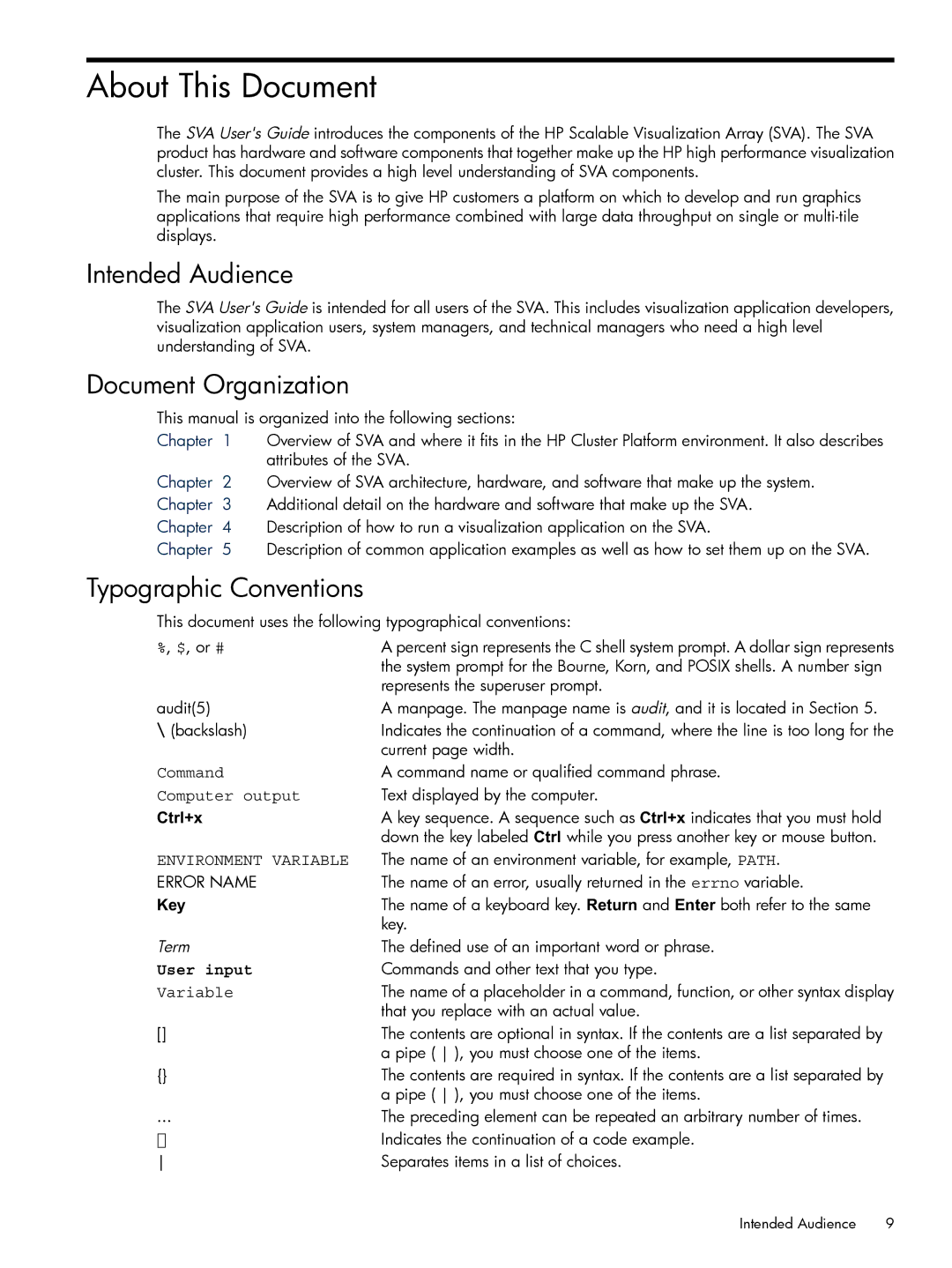About This Document
The SVA User's Guide introduces the components of the HP Scalable Visualization Array (SVA). The SVA product has hardware and software components that together make up the HP high performance visualization cluster. This document provides a high level understanding of SVA components.
The main purpose of the SVA is to give HP customers a platform on which to develop and run graphics applications that require high performance combined with large data throughput on single or
Intended Audience
The SVA User's Guide is intended for all users of the SVA. This includes visualization application developers, visualization application users, system managers, and technical managers who need a high level understanding of SVA.
Document Organization
This manual is organized into the following sections:
Chapter 1 Overview of SVA and where it fits in the HP Cluster Platform environment. It also describes attributes of the SVA.
Chapter 2 Overview of SVA architecture, hardware, and software that make up the system.
Chapter 3 Additional detail on the hardware and software that make up the SVA.
Chapter 4 Description of how to run a visualization application on the SVA.
Chapter 5 Description of common application examples as well as how to set them up on the SVA.
Typographic Conventions
This document uses the following typographical conventions:
%, $, or # | A percent sign represents the C shell system prompt. A dollar sign represents |
| the system prompt for the Bourne, Korn, and POSIX shells. A number sign |
| represents the superuser prompt. |
audit(5) | A manpage. The manpage name is audit, and it is located in Section 5. |
\ (backslash) | Indicates the continuation of a command, where the line is too long for the |
| current page width. |
Command | A command name or qualified command phrase. |
Computer output | Text displayed by the computer. |
Ctrl+x | A key sequence. A sequence such as Ctrl+x indicates that you must hold |
| down the key labeled Ctrl while you press another key or mouse button. |
ENVIRONMENT VARIABLE | The name of an environment variable, for example, PATH. |
ERROR NAME | The name of an error, usually returned in the errno variable. |
Key | The name of a keyboard key. Return and Enter both refer to the same |
| key. |
Term | The defined use of an important word or phrase. |
User input | Commands and other text that you type. |
Variable | The name of a placeholder in a command, function, or other syntax display |
| that you replace with an actual value. |
[] | The contents are optional in syntax. If the contents are a list separated by |
| a pipe ( ), you must choose one of the items. |
{} | The contents are required in syntax. If the contents are a list separated by |
| a pipe ( ), you must choose one of the items. |
... | The preceding element can be repeated an arbitrary number of times. |
| Indicates the continuation of a code example. |
Separates items in a list of choices. |
Intended Audience | 9 |
